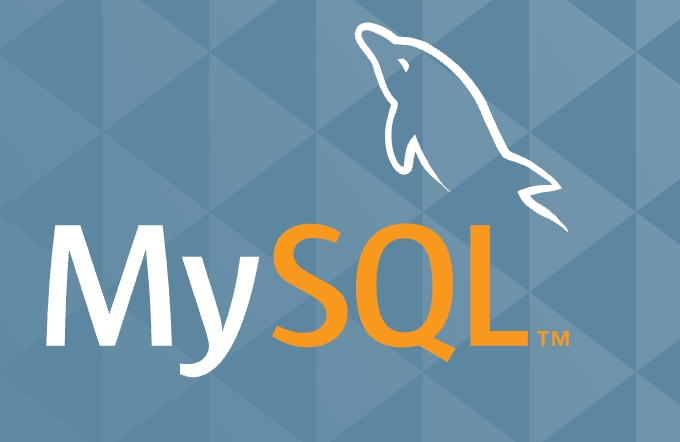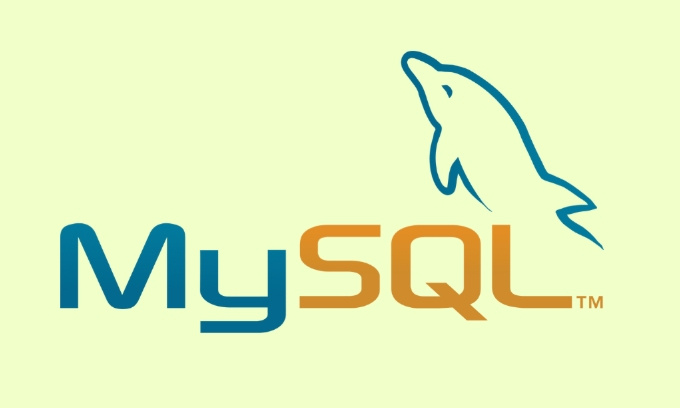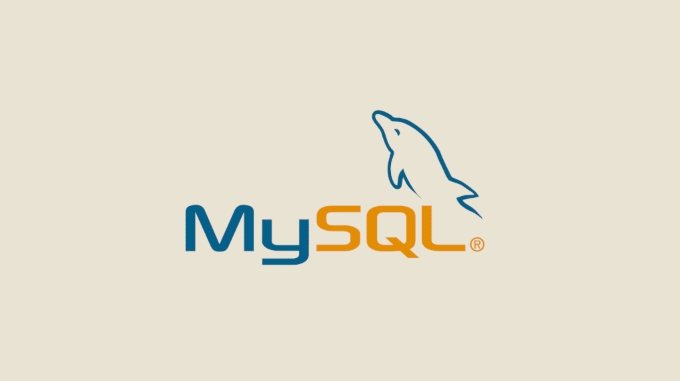To connect to a MySQL database from Python on Windows, you need to install the mysql-connector-python or pymysql module and correctly configure the connection parameters and network permissions. 1. Install the module: Use pip install mysql-connector-python or pip install pymysql; 2. Configure connection information: Provide host, user, password and database parameters, and it is recommended to manage sensitive information through environment variables or configuration files; 3. Ensure that the database user has remote access rights (such as remote database); 4. Check the firewall settings to ensure that port 3306 is open; 5. Use telnet to test port connectivity; 6. Deal with common errors: such as Access denied, Can't connect, Unknown database, SSL error and other problems. As long as the module is installed correctly, the information is correct, and the network is unobstructed, you can usually successfully connect.

To connect to a MySQL database from Python on Windows, the key is to install the appropriate driver, configure the database connection parameters, and ensure that the network and permissions are set correctly. Here are some practical steps and precautions.

Install the necessary modules
Python itself does not have the ability to connect to MySQL, so it is necessary to install third-party modules first. The most commonly used is mysql-connector-python or pymysql , both of which can implement basic functions.

You can use pip to install:
pip install mysql-connector-python
or:

pip install pymysql
If you are not sure which one to choose, mysql-connector-python is the officially recommended driver and has better compatibility; while pymysql is a pure Python implementation, and the installation is simpler.
Configure connection information
When connecting to the database, you need to provide basic information such as host address, user name, password, database name, etc. This information is usually provided by the database administrator.
Sample code (using mysql-connector-python ):
import mysql.connector
conn = mysql.connector.connect(
host="localhost",
user="your_username",
password="your_password",
database="your_database"
)
cursor = conn.cursor()
cursor.execute("SELECT VERSION()")
data = cursor.fetchone()
print("Database version : %s " %data)Notice:
- If the database is not local, change
hostto the corresponding IP or domain name. - Make sure your account has remote access (if it is a remote database).
- It is recommended not to hard-code passwords in the code, you can consider using environment variables or configuration files.
Check firewall and port settings
Sometimes even if the account and password are correct, it cannot connect to the database. It may be that the firewall blocks the connection request. MySQL uses port 3306 by default.
You need to confirm:
- Whether the target machine allows port 3306 to be inbound
- Your Windows Firewall is not blocking outbound connections
- If it is a cloud server, check whether the security group rules release the port
You can use the command line to test whether the port is open:
telnet your.mysql.host 3306
If the prompt "Connection failed", there is a problem with the network or firewall.
Handle common errors
You may encounter some typical problems during the connection:
- Access denied for user : Check whether the user name and password are correct, and whether the user has permission to log in from your IP.
- Can't connect to MySQL server on 'xxx' : It may be that the network is not connected, the service is not started, or the port is blocked.
- Unknown database : indicates that the connection is on, but the specified database does not exist.
- SSL error : Some MySQL servers require an SSL connection. You can add
ssl_disabled=Trueto the connection parameters to try to bypass (test environment only).
If you are using a virtual environment, also make sure that you are running the script in the correct environment to avoid errors where the module is not installed.
Basically that's it. As long as the module is installed and the information is filled in correctly, there is no problem with the network and you can usually connect.
The above is the detailed content of how to connect to mysql database from python on windows. For more information, please follow other related articles on the PHP Chinese website!

Hot AI Tools

Undress AI Tool
Undress images for free

Undresser.AI Undress
AI-powered app for creating realistic nude photos

AI Clothes Remover
Online AI tool for removing clothes from photos.

Clothoff.io
AI clothes remover

Video Face Swap
Swap faces in any video effortlessly with our completely free AI face swap tool!

Hot Article

Hot Tools

Notepad++7.3.1
Easy-to-use and free code editor

SublimeText3 Chinese version
Chinese version, very easy to use

Zend Studio 13.0.1
Powerful PHP integrated development environment

Dreamweaver CS6
Visual web development tools

SublimeText3 Mac version
God-level code editing software (SublimeText3)
 Connecting to MySQL Database Using the Command Line Client
Jul 07, 2025 am 01:50 AM
Connecting to MySQL Database Using the Command Line Client
Jul 07, 2025 am 01:50 AM
The most direct way to connect to MySQL database is to use the command line client. First enter the mysql-u username -p and enter the password correctly to enter the interactive interface; if you connect to the remote database, you need to add the -h parameter to specify the host address. Secondly, you can directly switch to a specific database or execute SQL files when logging in, such as mysql-u username-p database name or mysql-u username-p database name
 Handling character sets and collations issues in MySQL
Jul 08, 2025 am 02:51 AM
Handling character sets and collations issues in MySQL
Jul 08, 2025 am 02:51 AM
Character set and sorting rules issues are common when cross-platform migration or multi-person development, resulting in garbled code or inconsistent query. There are three core solutions: First, check and unify the character set of database, table, and fields to utf8mb4, view through SHOWCREATEDATABASE/TABLE, and modify it with ALTER statement; second, specify the utf8mb4 character set when the client connects, and set it in connection parameters or execute SETNAMES; third, select the sorting rules reasonably, and recommend using utf8mb4_unicode_ci to ensure the accuracy of comparison and sorting, and specify or modify it through ALTER when building the library and table.
 Implementing Transactions and Understanding ACID Properties in MySQL
Jul 08, 2025 am 02:50 AM
Implementing Transactions and Understanding ACID Properties in MySQL
Jul 08, 2025 am 02:50 AM
MySQL supports transaction processing, and uses the InnoDB storage engine to ensure data consistency and integrity. 1. Transactions are a set of SQL operations, either all succeed or all fail to roll back; 2. ACID attributes include atomicity, consistency, isolation and persistence; 3. The statements that manually control transactions are STARTTRANSACTION, COMMIT and ROLLBACK; 4. The four isolation levels include read not committed, read submitted, repeatable read and serialization; 5. Use transactions correctly to avoid long-term operation, turn off automatic commits, and reasonably handle locks and exceptions. Through these mechanisms, MySQL can achieve high reliability and concurrent control.
 Managing Character Sets and Collations in MySQL
Jul 07, 2025 am 01:41 AM
Managing Character Sets and Collations in MySQL
Jul 07, 2025 am 01:41 AM
The setting of character sets and collation rules in MySQL is crucial, affecting data storage, query efficiency and consistency. First, the character set determines the storable character range, such as utf8mb4 supports Chinese and emojis; the sorting rules control the character comparison method, such as utf8mb4_unicode_ci is case-sensitive, and utf8mb4_bin is binary comparison. Secondly, the character set can be set at multiple levels of server, database, table, and column. It is recommended to use utf8mb4 and utf8mb4_unicode_ci in a unified manner to avoid conflicts. Furthermore, the garbled code problem is often caused by inconsistent character sets of connections, storage or program terminals, and needs to be checked layer by layer and set uniformly. In addition, character sets should be specified when exporting and importing to prevent conversion errors
 Using Common Table Expressions (CTEs) in MySQL 8
Jul 12, 2025 am 02:23 AM
Using Common Table Expressions (CTEs) in MySQL 8
Jul 12, 2025 am 02:23 AM
CTEs are a feature introduced by MySQL8.0 to improve the readability and maintenance of complex queries. 1. CTE is a temporary result set, which is only valid in the current query, has a clear structure, and supports duplicate references; 2. Compared with subqueries, CTE is more readable, reusable and supports recursion; 3. Recursive CTE can process hierarchical data, such as organizational structure, which needs to include initial query and recursion parts; 4. Use suggestions include avoiding abuse, naming specifications, paying attention to performance and debugging methods.
 Strategies for MySQL Query Performance Optimization
Jul 13, 2025 am 01:45 AM
Strategies for MySQL Query Performance Optimization
Jul 13, 2025 am 01:45 AM
MySQL query performance optimization needs to start from the core points, including rational use of indexes, optimization of SQL statements, table structure design and partitioning strategies, and utilization of cache and monitoring tools. 1. Use indexes reasonably: Create indexes on commonly used query fields, avoid full table scanning, pay attention to the combined index order, do not add indexes in low selective fields, and avoid redundant indexes. 2. Optimize SQL queries: Avoid SELECT*, do not use functions in WHERE, reduce subquery nesting, and optimize paging query methods. 3. Table structure design and partitioning: select paradigm or anti-paradigm according to read and write scenarios, select appropriate field types, clean data regularly, and consider horizontal tables to divide tables or partition by time. 4. Utilize cache and monitoring: Use Redis cache to reduce database pressure and enable slow query
 Designing a Robust MySQL Database Backup Strategy
Jul 08, 2025 am 02:45 AM
Designing a Robust MySQL Database Backup Strategy
Jul 08, 2025 am 02:45 AM
To design a reliable MySQL backup solution, 1. First, clarify RTO and RPO indicators, and determine the backup frequency and method based on the acceptable downtime and data loss range of the business; 2. Adopt a hybrid backup strategy, combining logical backup (such as mysqldump), physical backup (such as PerconaXtraBackup) and binary log (binlog), to achieve rapid recovery and minimum data loss; 3. Test the recovery process regularly to ensure the effectiveness of the backup and be familiar with the recovery operations; 4. Pay attention to storage security, including off-site storage, encryption protection, version retention policy and backup task monitoring.
 Optimizing complex JOIN operations in MySQL
Jul 09, 2025 am 01:26 AM
Optimizing complex JOIN operations in MySQL
Jul 09, 2025 am 01:26 AM
TooptimizecomplexJOINoperationsinMySQL,followfourkeysteps:1)EnsureproperindexingonbothsidesofJOINcolumns,especiallyusingcompositeindexesformulti-columnjoinsandavoidinglargeVARCHARindexes;2)ReducedataearlybyfilteringwithWHEREclausesandlimitingselected






